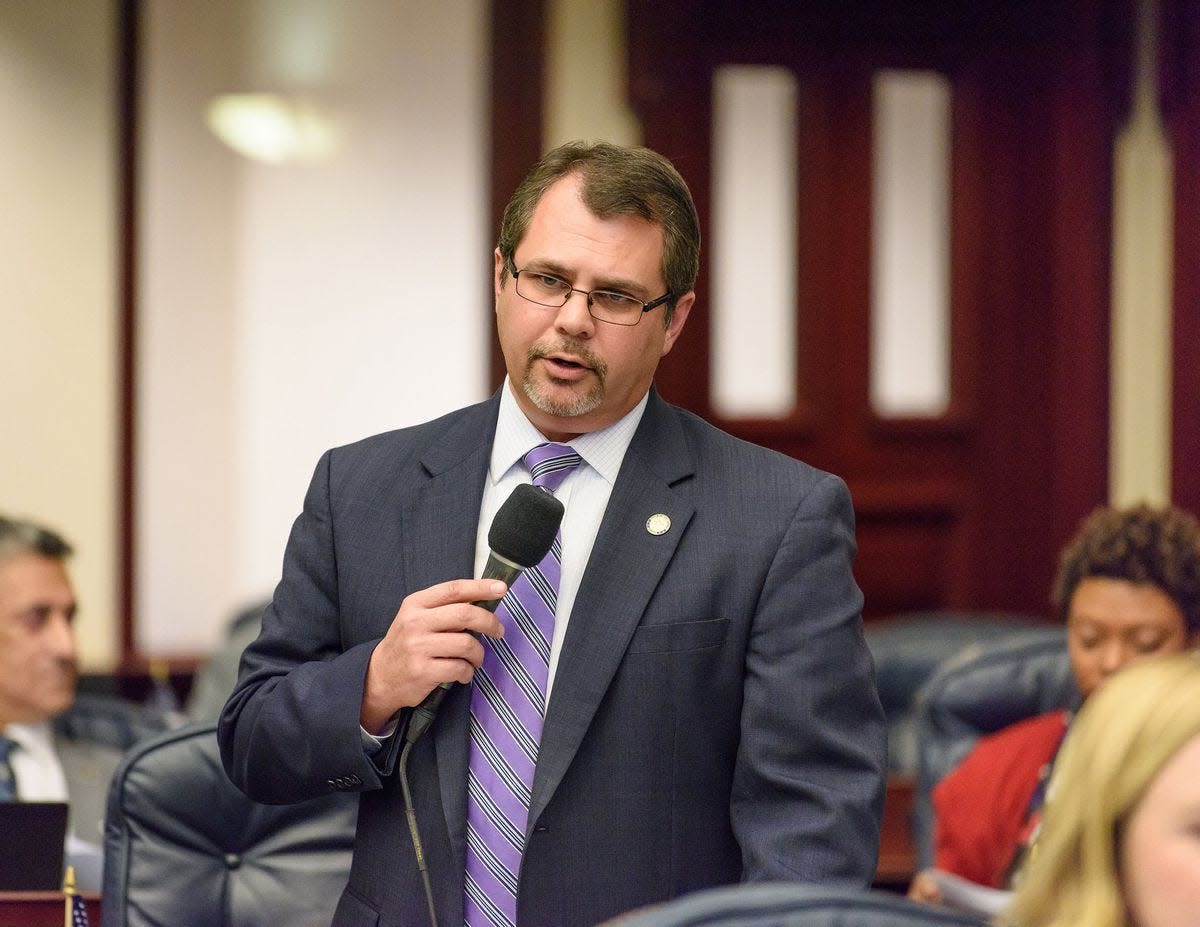House maps could add more Florida Republicans to Congress

TALLAHASSEE – The state House unveiled its first redistricting proposals Monday, including a pair of congressional plans that boost Republican chances of claiming more Florida seats during next year’s critical election fight for control of the U.S. House.
The two House proposals would create 17 and 18 Republican-leaning congressional districts, potentially increasing the state’s number of GOP members of Congress from the current 16.
The House approach also contrasts with Senate plans released earlier this month, which do little to disrupt Florida’s current partisan balance. The House plans are set to get their first public review by lawmakers Thursday when the chamber’s congressional redistricting subcommittee meets.
Democrats hold a narrow majority in the U.S. House and President Joe Biden’s future policy priorities are likely riding on the outcome of next year’s elections and the congressional balance.
Florida, which is adding a congressional seat because of population gains over the past decade, has been targeted as a likely battleground given its size and history of Republican-controlled legislatures pushing partisan maps.
But the state Senate’s initial proposed boundaries for 28 congressional seats faced little opposition from Democrats, who had feared worse and were largely accepting of the plans. There’s likely to be more pushback on how the House is looking to reconfigure congressional seats.
Balance of power at stake: After past ‘mockery,’ Florida GOP to begin new high-stakes redistricting effort
Sunbelt gains in U.S. Census: Texas will gain 2 congressional seats. Seven states to lose 1 seat, Census Bureau data shows
Among the differences, the House plans create two Democratic-leaning districts in the Tampa Bay area, while the Senate proposed three. Similarly, in Central Florida, seats currently held by Democrats U.S. Reps. Stephanie Murphy, Darren Soto and Val Demings, a candidate for U.S. Senate, get combined into only two seats likely to elect a Democrat, according to analysis by Matt Isbell, a Democratic data consultant.
He concluded that the House approach “nukes,” Murphy’s seat.
The National Democratic Redistricting Committee, which is chaired by former U.S. Attorney General Eric Holder, was quick to strike back against the Florida House maps.
"These maps do not reflect the population of Florida, according to the latest census data, and are not responsive to Florida's voters and were clearly drawn to completely tip the balance in favor of Republicans," said Kelly Ward Burton, NDRC president.
Florida House Democratic co-leader Evan Jenne of Dania Beach said "there's still a lot of work to do on these maps."
"It’s early, and hopefully we can have a productive public dialogue about how to make the fairest maps for the people of Florida," Jenne added.
Lawmakers aren't expected to finalize maps until the end of next year's session in March.
Like the Senate plans, the House proposals also increase Republican voter registration in a pair of Miami-Dade County districts flipped from Democrats in last fall’s elections. The seats held by freshman Republican Reps. Maria Salazar and Carlos Gimenez were made more favorable for electing a GOP member.
Salazar and Gimenez unseated two Democratic incumbents when Democratic-heavy Miami-Dade provided less backing for Biden than it had four years earlier when Hillary Clinton was the Democratic nominee.
Senate plans get mostly OK from Dems: Florida redistricting plans include a surprise – praise from Democrats
Fla GOP may want to avoid court fight: Florida lawmakers look to avoid running afoul of courts when redrawing districts
The House also released two redistricting plans for seats in its own chamber – the Senate having proposed legislative boundaries that only focused on the Senate. Republicans command both the House and Senate currently by wide margins.
The 120-member House now has 78 Republicans, and the redistricting plans would likely continue the GOP’s dominance. The two proposals create maps with 68 and 70 Republican-leaning districts, according to Isbell’s analysis.
The state’s Fair Districts constitutional amendments, approved by voters in 2010, require that congressional and legislative districts be drawn without intentionally favoring incumbents or a particular political party.
The Legislature’s redistricting chairs, Sen. Ray Rodrigues, R-Estero, and Rep. Tom Leek, R-Ormond Beach, have pledged that they will advance maps that meet state and federal law.
Still, there is pressure on Florida Republicans. The GOP nationally is looking to increase its congressional seats to wrest control of the U.S. House away from Democrats. But Florida Republicans also may be seeking to avoid a repeat of the three years of lawsuits, depositions, hearings, and trials which followed redistricting in 2012.
Courts in 2015 ultimately drew the state’s current congressional and Senate boundaries. The House plan approved by lawmakers in 2012 went unchallenged.
John Kennedy is a reporter in the USA TODAY Network’s Florida Capital Bureau. He can be reached at jkennedy2@gannett.com, or on Twitter at @JKennedyReport
This article originally appeared on Sarasota Herald-Tribune: House maps unveiled that could add more Florida Republicans to Congress

